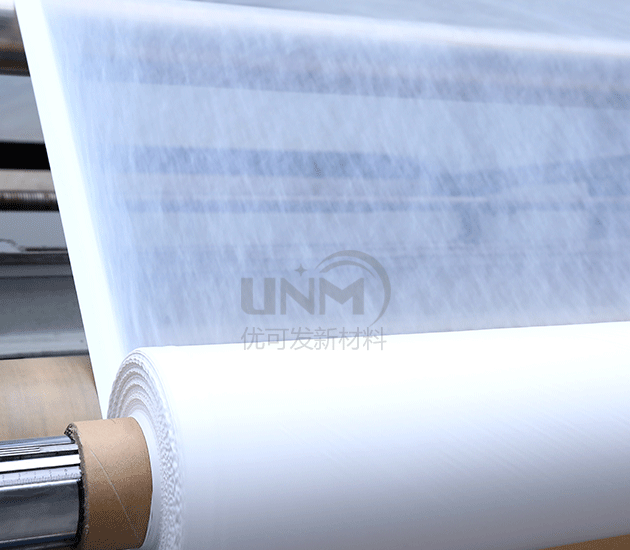The current production processes for polytetrafluoroethylene microporous films include calendering film method, turning film method and stretching film method. The stretched film method can be divided into uniaxial stretching and biaxial stretching. Through structural analysis and actual measurement, only biaxially stretched film has a good microporous structure.

The forming process of ptfe nano film is based on biaxial stretching abroad. Extended processing methods are often used. PTFE can be stretched at room temperature to 327°C, that is, the stretching below the melting point is performed in a high elastic state. Stretching at low temperatures will cause the film to rupture, making it impossible to stretch. However, when the temperature is higher than 327°C, the crystalline state between PTFE molecules changes to amorphous, and the network structure can be obtained
The stretching of PTFE The stretching process is a process in which thin fibers are continuously pulled out from the folded lamellae and become longer and thinner. During the unidirectional stretching (longitudinal stretching) process of the PTFE calendered film, the thin fibers are continuously pulled out, forming nodes composed of island nodes composed of unstretched crystal regions and slender fibers connecting the nodes. ——Fiber structure.
In order to avoid the risk of reduced efficiency of the mask during storage and use, electrostatic adsorption cannot be used to collect particles, and particles can only be intercepted through pure physical interception. If you want to rely on pure physical interception to achieve filtration, the size of the fibers needs to reach the nanometer level. Polytetrafluoroethylene (PTFE) dispersion resin can obtain thin fibers less than 100nm through biaxial stretching technology. These nanofibers are staggered to form The mesh structure has very good filtration efficiency, which is enough to protect against small bacteria and viruses. PTFE film has very excellent tensile properties. It can be formed and rolled up even when stretched hundreds of times in the longitudinal and transverse directions. The thickness of PTFE nano-film can be less than 1 μm, and high efficiency can be obtained with very low resistance.
The ptfe nanometer film has good water-repellent properties. Its characteristic is that human body sweat can be emitted outwards, but external water and small bacteria and viruses cannot enter. There are about 1 billion pores per square centimeter, with a porosity of more than 90%. The pore diameter is about 0.2 μm, which is one ten thousandth of the diameter of a water droplet, but about 700 times larger than the size of water vapor molecules. Liquid water cannot enter, and sweat Air can pass through, thus achieving excellent hydrophobic and moisture permeability.
The ptfe nanofilm produced by the manufacturer uses imported raw materials, has a full set of advanced production equipment, an advanced clean room and an independent composite slitting workshop. The production quality of PTFE membrane is ensured; imported production testing instruments are used to detect the quality of PTFE membrane, and the product quality is reliable. Interested parties can enter the store and contact us.
</p




